Summertime in Annapolis at the Graduate Institute
Although the Graduate Institute holds classes throughout the year, the atmosphere of the summer session varies from the regular academic year. During the summers, the Graduate Institute hosts teachers from all over the country who use their summer break to return to St. John’s. Some of these teachers even refer to this cherished tradition as their ‘summer camp’; a time when they can reunite with their fellow Johnnies and delve deeply into the Great Books. Some stay off-campus while others may choose to live on-campus in the dorms. There isn’t much time for leisure (though some may argue studying is leisure) since the program is packed with readings and classes everyday for 5 weeks, condensing material that would otherwise take 16 weeks to study in the fall or spring, as well as guest lectures on Wednesday evenings, the annual summer All-College Seminar, and various study groups.
However, in Annapolis, on Monday nights at 6pm, students gather for bocce, the official GI sport, and pizza, the unofficial GI food, for the weekly After-Seminar Gathering (ASG). Students finally get to take a break and relax outside in the warm weather, competing in the age old game (bocce dates as far back as ancient Egypt) in front of the BBC before the sunset which is late in the summer, often past 7:30pm. Students, friends, family, and faculty will often be seen deep in conversation, gathered around a game of bocce, as the sun begins to set and the fireflies light up the lawn.
Another fun pastime of the summer GI students involves organizing ideas. Students draw quadrants on the chalk board, with various opposing topics of interest as the x and y axes, often based on the program readings. Once the quadrants are defined, students find enjoyment in brainstorming ideas that would fit well into those categories and debating where certain topics, be it from pop culture or ancient literature, fall along the axes. For example if the vertical axis goes from Paris to Hector (two prominent characters in the Iliad with vastly different, even opposing, values and motivations) and the horizontal axis goes from dogs to cats (animals with vastly different temperaments among other dissimilarities), a student might debate where other Greek characters such as Odysseus would fit on the chart, whether his cunning or bravery in battle makes him more like Paris or Hector and whether his loyalty or lack thereof in his homecoming makes him more like a cat or a dog.
The evening ends when students have to continue working on their papers and return to their books, such as Machiavelli’s The Prince, in order to prepare for class the next day.


